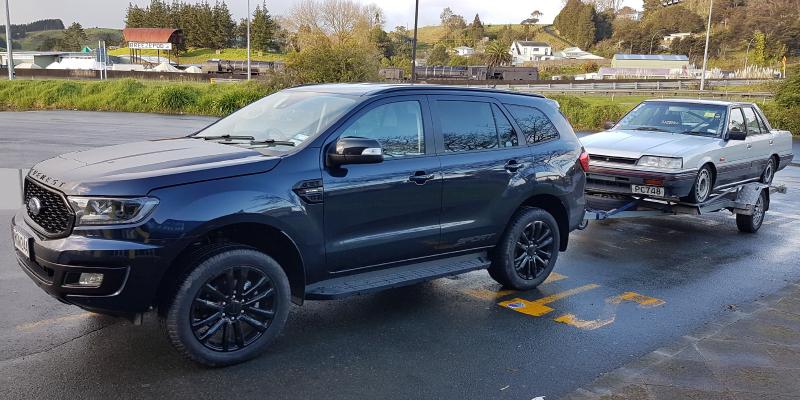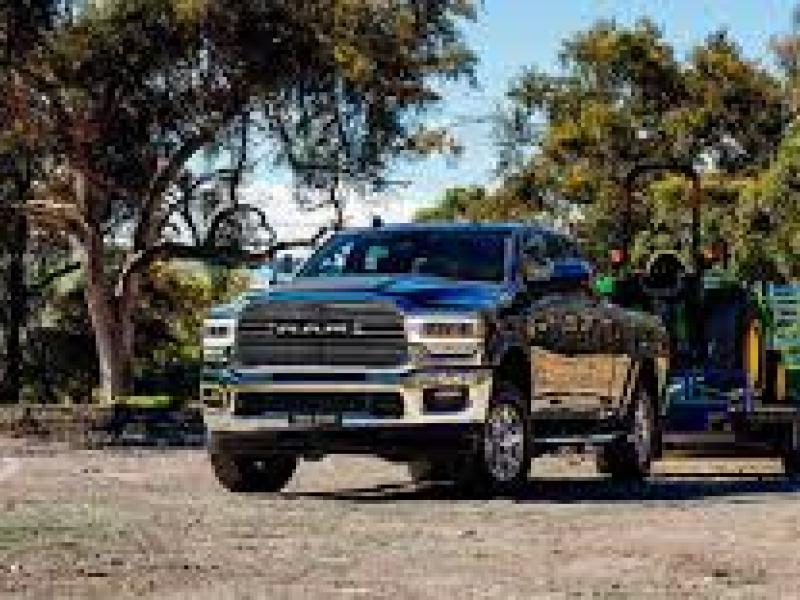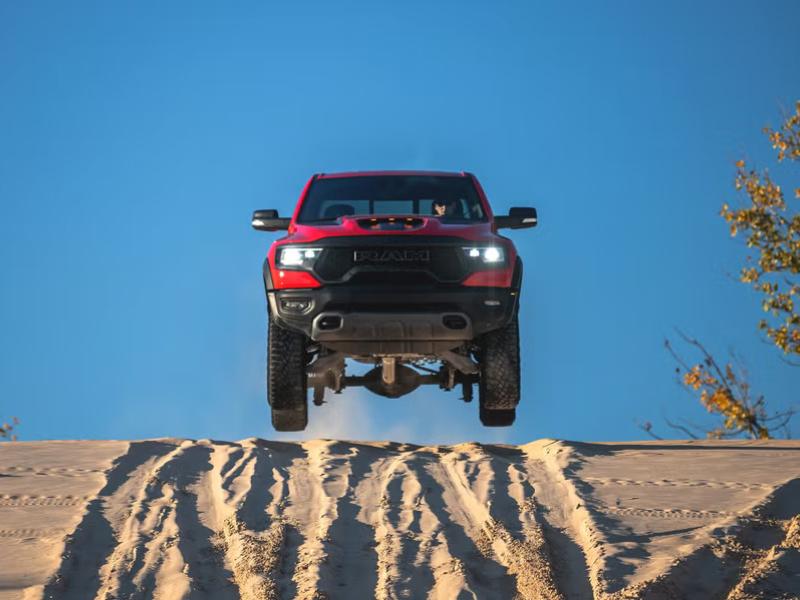What price a state-of-the-art Ute-based SUV able to tackle the toughest bush track, tow a ‘bloody big’ boat and not look too out of place in the CBD? Well. If you’ve got $73,990 + ORC to spend, NZ4WD Editor Ross MacKay reckons Ford’s new Everest Sport would be a good place to start.
So, you might be wondering (as I was before I picked up Ford’s press ‘car’). What exactly ‘is’ this ‘new’ Sport version of the ‘Ranger-based Everest?
Bar the fact that from pretty much midway through 2019 Ford quietly dropped the original 3.2 litre five-cylinder single-turbo ‘Ranger’ engine and six-speed transmission for its new 2.0 litre four-cylinder bi-turbo ‘Raptor’ power plant and 10-speed auto trans, I wasn’t even aware that there was a second, slightly cheaper model on sale here.
Yet there it was on the Ford NZ website when I was fact-checking the price of the all-singing, all-dancing Titanium model ($79,990 + ORC) – the Everest Sport RRP $73,990 + ORC. So, yes, I either have to ‘get out more’ or keep a closer eye of Ford PR man Tom Clancy’s regular new model news releases.
Anyhoo... the Everest Sport is like a Ranger FX4 ute; a sort of badge-engineered ‘special version’ to – I suppose – give dealers something ‘new’ to talk to prospective buyer about between more major model upgrades.
The key difference – visually – is the blackout treatment of the grille, rear-view mirrors and wheels. But that’s not what’s made the difference to the price.
No, that has come from a careful trimming of the Titanium model’s fulsome standard spec list. You don’t, for instance, get the sunroof, electrically-adjusted front passenger seat or the illuminated scuff panels.
Nor do you get Ford’s Blind Spot Monitoring System (BLIS) with Cross Traffic Alert, Tyre Presusre monitoring system (TPMS) or that much-hyped though I suspect little-used Active Park Assist package (which can parallel park your Titanium for you).
You even have to do without heated front seats, and back seat floor mats. But do you know what? I can’t say I missed any of these supposedly essential (these days) features.
What you DO get I would suggest is pretty much everything which makes the Titanium such an outstanding if rather expensive proposition; from that thoroughly impressive new bi-turbo two litre diesel engine and matching 10-speed auto trans to the smooth, beautifully modulated ride, all-day comfortable, electrically adjustable driver’s seat and subtle and supremely unthreatening way the latest version of Ford’s Lane Keeping Aid gentle guides you back into your lane should you stray.
Of course I’m sure there will be the odd diehard out there mumbling away about the only things that should come in 2 litres are (what is it now? That’s right, milk and ice cream) but seriously, even some of the more forward-thinking Aussies are finally getting over their ‘thing’ with capacity,
Recently, for instance, I stumbled over a YouTube site dedicated to caravanning and camping across the Tasman. Coincidentally one of the shows I watched when the Everest Sport was parked in my driveway was one in which the presenters – a father and son – spent a day comparing and contrasting the towing ability of two Ford Rangers – a 3.2 litre five-cylinder/six-speed auto and one of the new 2.0 litre four-cylinder ‘10-speeds.’
The route they chose had everything, from long, flat straights to short, sharp, pinch-type hills plus the odd bit of long, sweeping uphill and down again stretches... and the 2.0-litre was considered the better of the two engines – and this was for towing a fairly big family-size caravan.
I spent most of my time behind the wheel of Ford NZ’s tester towing my drift car to and from places – various workshops in the week leading up to the big Chrome Expression Session event then to and from the track each day over the weekend, changing gear manually via the switch on the driver’s side of the auto shifter.
Because the ‘brain’ of the transmission is programmed to hit as high a gear as quickly as possible, experts counsel you to manually change if you are towing so that you can keep the engine spinning close to its power and torque peaks.
This is doubly important, for instance, when you have 10 ratios to pick and choose from, and when left to its own devices the ‘intelligent’ transmission is happy for the engine to – literally – idle along; which is fine if you are competing in an economy run but not much chop in the ‘real’ world.
Left to its own devices, the trannie will default right up to 9th fairly quickly, whereas I found 6th and 7th were the best ratios to keep the engine spinning at closer to where it develops its peak torque of 500Nm (between 1750 and 2000rpm).
In daily use the Everest Sport is as easy to live with as its long-time category standard-bearer, the Toyota Prado. It sits high like a Prado so that you are always aware you are stepping up into the cockpit though once inside the feel is cosier, without quite the same head, elbow and knee room as the big Toyota.
In fact, if you plan on using an Everest Sport as a true seven-seater on a regular basis you won’t find much room for much luggage behind the third row of seats.
Fold them forward and things start to look up (with over 1000 litres of usable space measured to the roof) or as I found out, fold both rows of seats flat and its like you have a lockable, covered ute tray which – at a pinch – you could sleep on.
Bottom line? Ford has built a huge amount of on as well as off-road capability into its Ranger-based Everest line. Obviously capability like this comes at quite some cost. But if you’re good for $70+K and a Ranger Raptor is just not ‘you’ (for whatever reason) ask your Ford dealer about an Everest Sport.
I don’t think you will be disappointed.
SPECIFICATIONS
Ford Everest Sport
ENGINE: 2.0L 16-valve bi-turbo in-line 4-cylinder diesel
TRANSMISSION: 10-speed auto w/ selectable, on-demand 4WD system, Ford Terrain Management System and e-locker rear diff.
POWER: 157kW @3750rpm
TORQUE: 500Nm @ 1750-2000rpm
ECONOMY: 7.0l/100km
CO2: 181g/km
SUSP. FRONT/REAR: Coil/coil w/multi-link & Watts linkage rear.
BRAKES: FRONT/REAR: Disc/Disc
WHEELS/TYRES: 20 x 8.5j alloy w/265/50R x 20 tyre
TURNING CIRCLE: 11.07m
LxWxH: 4892x2180x1837mm
WHEELBASE: 2850mm
APP/DEP ANGLES: 29.5/25 degrees
GROUND CLEARANCE: 255mm
WADING DEPTH: 800mm
KERB WEIGHT: 2413kg
TOWING: 750kg (ub),3100kg (b)
SAFETY: ESP w/ROM & ABS, AEB w CMS & EBD +ACC w/ASLD, SSR+DAS & LDW& LKA. Also HDC & HLA.
SAFETY RATING: 5-star ANCAP NZ
WARRANTY: 5 Year/Unlimited km
RRP: $73,990







